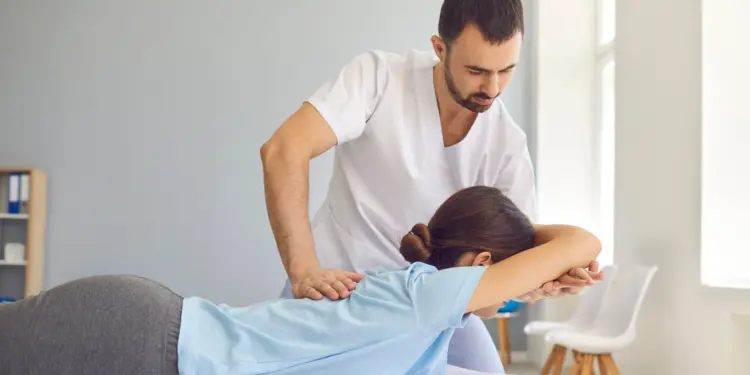According to the International Association for the Study of Pain, low back pain (LBP) is recognized as the leading cause of disability worldwide with the global burden of LBP steadily increasing since 1990. In 2020, that translates to around 619 million people and that number is estimated by the World Health Organization to increase to 843 million by the year 2050.
Safe and effective ways to address low back pain are becoming more important for people of all ages and for society as a whole. One of the primary reasons for this is the crisis surrounding opioid use for pain. The heavy use of opioids as an intervention began in the 1990s and has transitioned through several waves of upsurgence since that time. The CDC has cited that the most common drugs involved in prescription opioid overdose deaths include methadone, oxycodone and hydrocodone. Prescription opioid overdose deaths also often involve benzodiazepines which are used to sedate, induce sleep and relieve anxiety.
Opioids bring with them the serious risks of abuse, addiction and overdose. In addition, even when taken as directed, prescription opioids can have a number of additional side effects. Increased drug tolerance (meaning more medication is needed to provide the same pain relief), physical dependence, increased sensitivity to pain, nausea, depression, lower libido, dizziness or confusion to name a few.
Growing Trends in Natural Pain Relief
With the possible risks associated with opioid use, drug-free, first-line solutions for pain relief are more pertinent than ever. Recently, the Harris Poll has shown that younger Americans are opting to adopt more natural solutions at an increasingly higher rate.
According to the poll, more Americans age 54 and younger are choosing natural, drug-free chiropractic care to manage LBP. Many younger Americans grew up during the height of the opioid crisis and witnessed the dangers of prescription painkillers on the health of individuals, how opioid use could adversely affect families and the ways that the crisis negatively impacted communities and are seeking safe and effective alternatives.
This new poll also lends further credibility to in-depth health insurance claims research. In a 2022 pre-print study, researchers reviewed a database of more than 616,000 insured adults with LBP and found that doctors of chiropractic (DCs) were contacted as the desired first portal of care by 31% of patients. This was similar to the Harris Poll results and also showed that the numbers of individuals seeking chiropractic care first were very comparable to the 36% that opted to try medical allopathic or osteopathic treatment as their first stop.
Finding health care options is exceptionally important whether people have insurance or find themselves uninsured. The Harris Poll showed that 13% of uninsured poll respondents sought care from DCs at nearly the same rate as they did from other types of primary care doctors. The result indicates that when insurance coverage is removed from decision-making, that patients view chiropractic care as an effective and affordable way to manage their LBP.
Removing Roadblocks to Care
According to the Harris Poll, 21% of respondents said that they initially avoided chiropractic care due to the misconception that the treatment might hurt. In reality, chiropractic care offers gentle and varied approaches to optimize joint function in the spine. Chiropractic adjustments may occasionally elicit a ‘popping’ sound as is stereotyped in films and media. Formally termed ‘cavitation,’ the popping sound does not cause or indicate pain, it is simply a release of gasses within the joint capsule. Some adjustments elicit the noise, some do not, both are normal responses.
For those patients with financial or insurance roadblocks, many chiropractic clinics also offer reasonable payment plans or options that can help ease the burden of out-of-pocket care.
Consumers seeking care for their LBP, should consider a primary care provider such as a doctor of chiropractic to assist them with their neuromusculoskeletal conditions. This can potentially avoid the dangers and risks of prescription painkillers. If seeking care first from a primary medical provider, ask them about collaborating with a DC for optimized healing using a natural approach before drugs or surgery.
As consumers (insured or uninsured) seek care for low back issues, there are a variety of resources available. To find a doctor, the Yellow Pages can still be a local resource. At a broader level, the Foundation for Chiropractic Progress (F4CP) also hosts a national database to find a DC near your zip code. Potential patients can search for chiropractors, call and ask questions, and if there are preferences between a male or female practitioner they can also filter their search to find specific practitioners.

